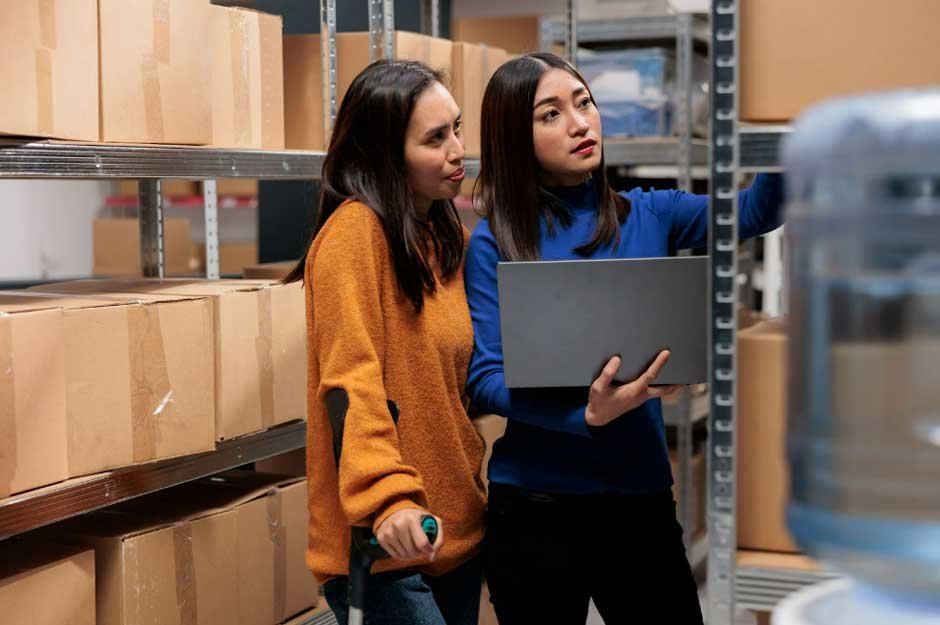
Smart Office Design Tips You Need to Know
In today’s fast-paced world, designing a smart office isn’t just a trend—it’s a necessity. Your workspace should boost productivity, inspire creativity, and reflect your company’s culture.
Whether you’re starting from scratch or revamping an existing setup, nailing down the fundamentals of smart office design can transform your office into a hub of innovation and efficiency. Ready to dive in? Let’s get started with the essential tips first.
Make Ergonomics a Priority
Working in discomfort is a productivity killer, which is why prioritizing ergonomics is essential. Start by investing in adjustable desks and chairs with proper lumbar support, and consider standing desks to encourage movement throughout the day.
Position computer monitors at eye level and an arm’s length away to reduce strain on the neck and eyes—a small adjustment with a big impact. Create areas for employees to stretch or relax to combat fatigue during long work hours.
The importance of ergonomics goes beyond comfort—it’s about protecting your team and your bottom line. According to the National Safety Council, musculoskeletal disorders (MSDs) remain a top workplace injury, costing businesses billions each year.
With initiatives like the MSD Solutions Lab proving that better ergonomic practices can transform worker well-being, there’s no denying it: a thoughtfully designed workspace doesn’t just prevent aches and pains—it fuels focus, boosts morale, and keeps productivity firing on all cylinders.
Optimize Storage and Workspace Logistics

Image by DC Studio from Freepik
Efficient office design often goes beyond desks and meeting spaces—it’s about smart logistics, especially when managing back-end operations or on-site storage.
If your office includes a warehouse or inventory area, streamlining how bulky supplies or materials are handled is key.
Using tools like heavy-duty skid steer pallet forks can make it easier to move large items quickly and safely, ensuring organization without disrupting workflow.
By optimizing both the workspace and the supporting infrastructure, you create a seamless environment that keeps everything running smoothly, from the front desk to the storage room
Reflect Your Brand Through Design
Your office should quietly communicate who you are as a company. Every detail—colors, furnishings, and wall art—contributes to the overall experience of the space.
Even subtle elements, like well-placed signage, can play a key role in tying everything together. For example, investing in custom business signs can help define areas of your office while seamlessly integrating with your brand’s identity.
Place these around key areas like meeting spaces or brainstorming corners. From subtle logos on walls to signage that complements your design, these small touches create a cohesive and polished environment.
When your space thoughtfully reflects your brand, it builds an atmosphere that resonates with employees and visitors alike, making your office feel intentional and uniquely yours.
| Did You Know? Office design can reflect both your brand and sustainability. Introduced by WWF Finland, the green office concept ties visual identity to eco-friendly practices. Now widely embraced across Europe and parts of Southeast Asia, it shows how thoughtful design can merge style with sustainability. |
Incorporate Technology Seamlessly

Technology is the backbone of smart office design, but it must be integrated thoughtfully. Start with essentials like fast internet, wireless charging stations, and smartboards to streamline tasks and enhance collaboration.
Opt for furniture with built-in power outlets and mount screens in meeting rooms to reduce clutter and maintain a clean aesthetic.
Don’t forget smart lighting systems that adjust throughout the day. They save energy and create a comfortable, productive atmosphere.
When done right, technology blends effortlessly into the background while transforming your workspace into a hub of innovation and efficiency.
Support Remote and Hybrid Work Models
The rise of hybrid work calls for an office design that bridges the gap between remote and in-person teams.
Start with reliable technology—high-speed internet, cloud platforms, and video conferencing tools—to ensure virtual interactions feel as natural as face-to-face meetings. Flexible workstations, like hot-desking or shared desks, allow for a dynamic and efficient use of space.
Additionally, quiet rooms or private areas provide hybrid employees with a distraction-free zone when they’re in the office. A well-designed hybrid workspace fosters inclusivity and ensures everyone, whether remote or on-site, stays connected and productive.
| Did You Know? Global digital jobs are projected to grow by 25% by 2030, reaching over 90 million roles, says the World Economic Forum. Remote work expands opportunities for workers and allows employers to recruit talent globally, making hybrid workspaces essential for bridging the gap between remote and in-office teams. |
Bringing Your Workspace to Life
A smart office design goes beyond desks and walls—it’s about creating an environment that inspires, energizes, and adapts to the future. By prioritizing technology, collaboration, ergonomics, and flexibility, you’ll not only boost productivity but also reflect your company’s values.
So, jump in and start designing a workplace that works as hard as you do. After all, a well-thought-out office isn’t just good for business—it’s life-changing for the individuals who walk through its doors every single day.


